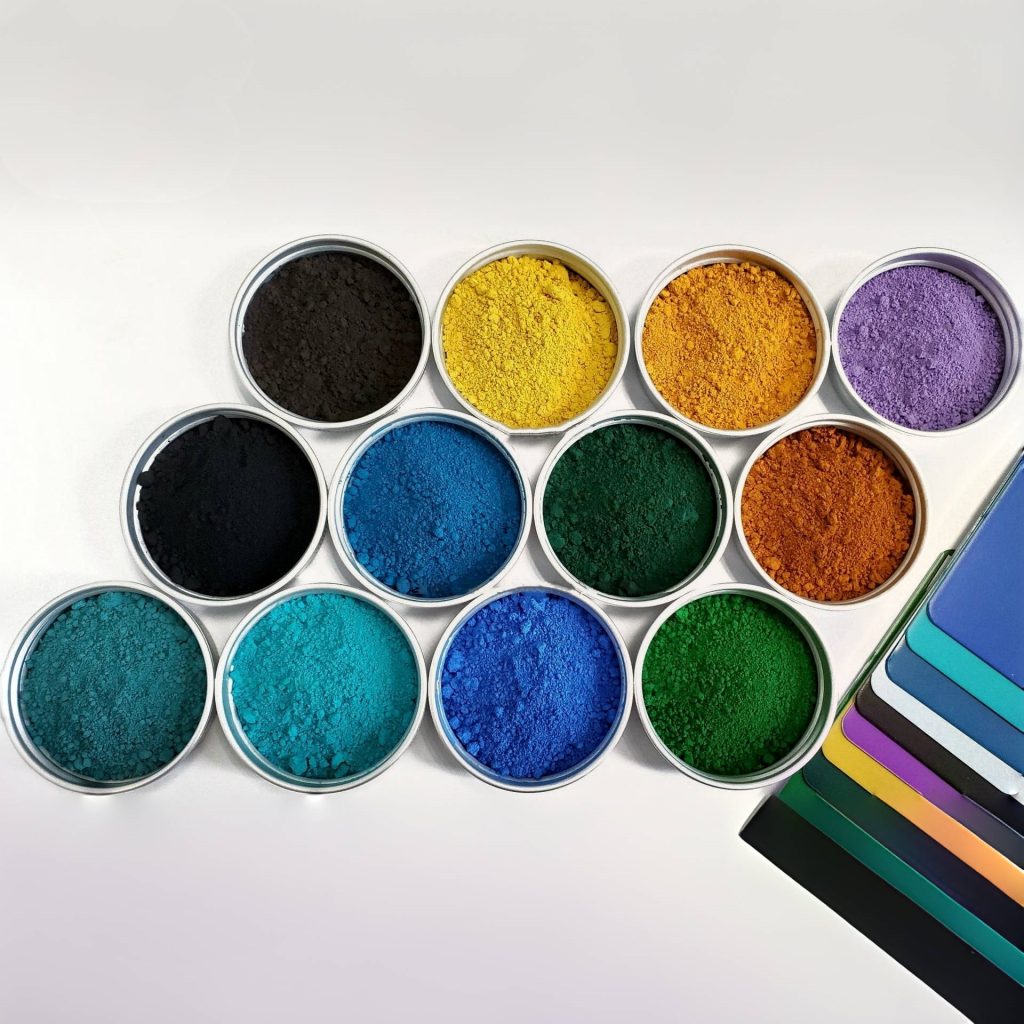Complex Inorganic Color Pigments (CICP) are highly stable pigments formed through solid-state reactions involving multiple inorganic metal oxides. These pigments are created via a carefully controlled sintering process at high temperatures, resulting in unique crystalline structures. Due to their exceptional weather resistance, chemical stability, lightfastness, and color durability, CICP pigments are widely used in coatings, ceramics, plastics, paints, and other industries.
CICP's chemical composition primarily consists of metal oxides, such as titanium, aluminum, chromium, iron, and manganese. Through high-temperature solid-state reactions, these metal oxides penetrate each other's crystal lattices, forming a unique eutectic structure. This structure provides CICP pigments with high chemical stability, allowing them to maintain their physical properties and color stability even under extreme conditions such as high temperatures or strong acid and alkali environments.
The color performance of CICP pigments is derived from electronic transitions between metal ions and their light absorption and reflection properties. The color generation is based on coordination field theory, where the transition metal ions in the metal oxides adjust their oxidation states or incorporate other metals to alter the wavelengths of absorbed light, resulting in different colors.
Heat Resistance: CICP pigments can typically withstand temperatures above 1200°C without decomposition or significant change. This feature makes them ideal for high-temperature applications such as ceramic glazes and glass coatings.
Weather Resistance: Due to their robust crystalline structure, CICP pigments exhibit minimal fading or degradation even after prolonged exposure to ultraviolet rays, humidity, and other environmental conditions. Compared to organic pigments, CICP offers superior color retention in outdoor conditions.
Chemical Resistance: CICP pigments have strong resistance to acidic and alkaline environments, making them suitable for industries such as construction and industrial coatings, where chemical resistance is critical.
Environmental Friendliness: Unlike many traditional pigments, CICP pigments are generally free of harmful metals such as lead and cadmium, complying with current international environmental regulations. Therefore, they are widely used in environmentally sensitive applications such as toys, food packaging, and cosmetics.
The unique properties of CICP pigments enable their widespread application across various industries:
Architectural Coatings: Due to their excellent weather and chemical resistance, CICP pigments are commonly used in exterior wall coatings, metal finishes, and other architectural materials. These pigments ensure that buildings maintain their appearance for a long time, even under harsh environmental conditions.
Plastics: CICP pigments' heat resistance and chemical stability make them ideal colorants for plastic processing, especially in high-temperature processes such as plastic films and piping, where stable color performance is essential.
Ceramics and Glass: Thanks to their high heat resistance and color stability, CICP pigments are widely used in ceramic glazes and glass colorants. During the ceramic firing process, CICP pigments retain their structure and color, providing long-lasting color for ceramic products.
Industrial Coatings: CICP pigments excel in anti-corrosion coatings in industrial settings. They can withstand strong acids, alkalis, and solvents in industrial environments, extending the lifespan of coatings.
As environmental regulations become stricter and demand for high-performance materials grows, the future of CICP pigments in the global market looks promising. Zhonglong Materials is focused on developing environmentally friendly and non-toxic CICP products, driving continuous innovation in inorganic pigment technology to meet the growing demand for durable, high-performance colorants across industries.
In the future, CICP technology is expected to move further towards customization, integrating nanotechnology, coating technologies, and eco-friendly material applications. This will provide efficient and sustainable color solutions for high-end fields such as automotive, electronics, and packaging.
Complex Inorganic Color Pigments (CICP) are becoming an indispensable color solution in modern industrial production due to their excellent performance and wide range of applications. Zhonglong Materials Limited will continue to increase its research and development efforts in this field, providing customers with competitive, high-performance products through ongoing innovation.
